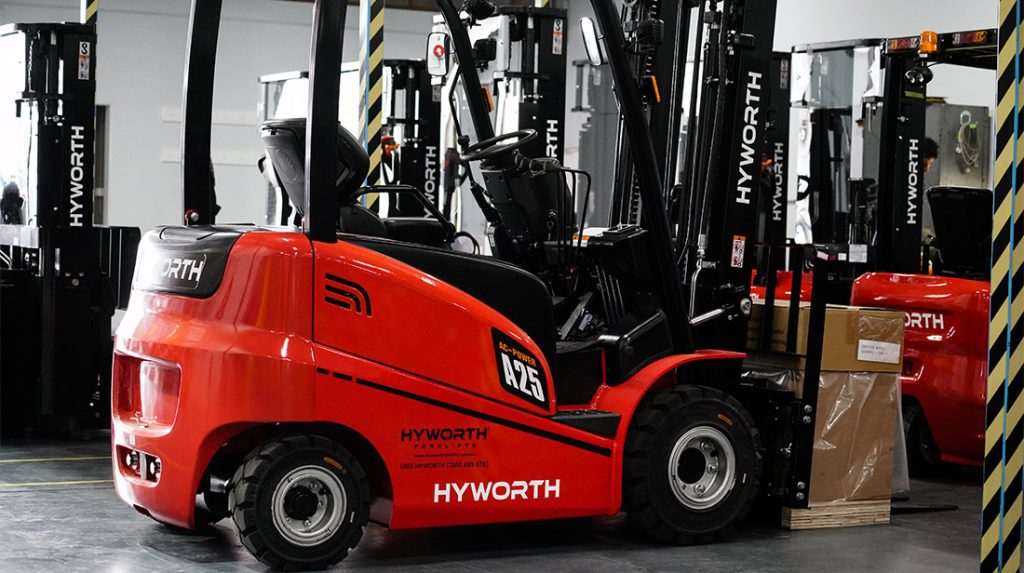
Buying a forklift is a significant decision that can shape the efficiency and safety of your operations for years to come. Whether you run a warehouse or distribution centre in Sydney, understanding the key considerations before buying a forklift is essential.
In this guide, we’ll walk you through everything you need to evaluate — from the type of forklift and fuel source to manoeuvrability, aisle width, load capacity, and dealer support. With this knowledge, you’ll be in a better position to choose the right machine for your business needs and avoid costly mistakes.
Why it’s crucial to do your homework before buying a forklift
Many businesses rush into buying equipment based on price or brand reputation alone. While these are valid concerns, they should never be the only factors considered. A forklift plays a central role in material handling — if it’s underpowered, poorly suited to your environment, or difficult to manoeuvre, it will cost you in more ways than one.
Before buying a forklift, you must consider safety regulations, maintenance schedules, operator comfort, and the specific type of work it will perform. Selecting a forklift that aligns with your usage patterns helps reduce wear and tear, minimises accidents, and enhances operational flow.
It’s about future-proofing your business. A forklift may last 8 to 10 years, so investing wisely from the start pays off long term.
Understand where and how the forklift will be used
Indoor vs outdoor use affects forklift choice
Your operating environment will shape many of your forklift specifications. Forklifts designed for indoor use — particularly in warehouses — must be compact, quiet, and emissions-free. In these cases, electric forklifts are ideal. They’re energy-efficient, produce no exhaust, and operate quietly, making them safe and compliant for enclosed environments.
For outdoor operations or mixed-use areas, LPG or diesel forklifts are more robust. These machines provide the high torque needed for heavy lifting and rough terrain. They are better suited to construction sites, yards, and open-air storage areas.
Also, consider the flooring. Uneven or rugged ground requires pneumatic tyres, while smooth concrete floors indoors benefit from cushion tyres. Getting this wrong can impact stability, increase maintenance, and reduce operator comfort.
Know your load: Weight capacity and lift height
Before buying a forklift, take time to review the heaviest loads you’ll lift and how high they need to be stacked. Every forklift has a maximum forklift capacity and lift height requirement.
Overloading a forklift can lead to mechanical failure or tipping accidents. To prevent this, always select a model with a slightly higher capacity than your typical load.
Lift height is equally critical. Will your forklift need to place goods on high racks or remove stock from elevated shelving? Make sure the maximum lift height meets or exceeds your tallest storage area.
Also, consider load centre — this refers to how far forward the load’s weight is distributed. The further the load is from the mast, the more strain it puts on the forklift. This can reduce safe lifting capacity if not accounted for properly.
Measure your aisles and consider manoeuvrability needs
The aisle width in your warehouse or storage facility will directly influence what kind of forklift you can use. Traditional counterbalance forklifts need more room to turn and operate, which may not suit businesses with tightly packed shelving.
If your aisles are narrower than 3 metres, you’ll benefit from narrow-aisle solutions like reach trucks, order pickers, or three-wheel forklifts. These models are specifically designed for compact environments and are capable of turning within smaller spaces.
Manoeuvrability also plays a role in speed and safety. A forklift that’s too large for your facility may move more slowly and risk damaging inventory or racking systems. Measuring your tightest spaces beforehand helps avoid issues down the line and ensures smooth operation even during busy shifts.
Choose the right forklift type for your operations
Walk-behind forklifts: Flexible lifting for smaller operations
Walk-behind forklifts are ideal for businesses that need lifting capabilities in confined areas. Unlike ride-on models, operators walk behind the forklift and control it using a handle, allowing precise navigation in tight aisles or storage rooms.
These units are especially useful for tasks that involve loading and unloading low-level racking or transporting goods over short distances indoors. Their compact footprint and intuitive controls make them an excellent option for smaller warehouses and retail stockroom.
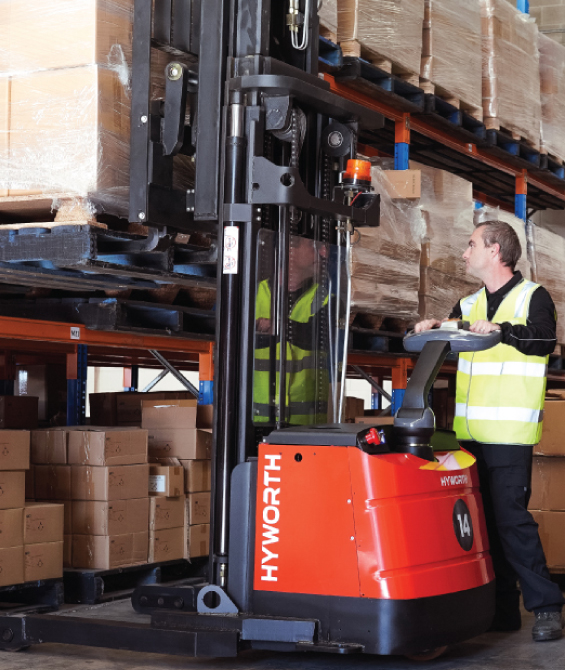
They offer solid lifting power without taking up too much room, and because they are electrically powered, they are quiet, emission-free, and relatively low-maintenance.
Pallet movers: Simple, safe transport for pallet loads
Pallet movers — also known as pallet jacks or pallet trucks — are designed specifically for moving palletised goods from one location to another. They are not meant for stacking or high lifting but are incredibly efficient for horizontal transport.
Electric pallet movers provide powered assistance to reduce manual effort, making them ideal for reducing operator fatigue over long shifts. These are commonly used in logistics, retail, and warehousing environments where rapid pallet movement is needed but heavy lifting isn’t required.
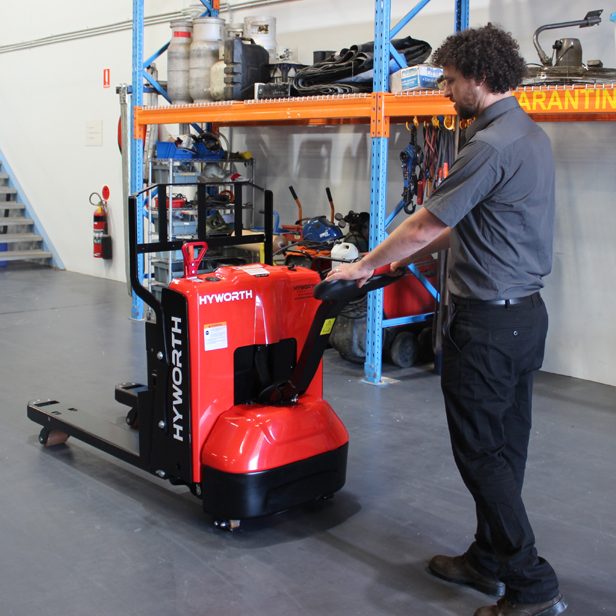
Pallet movers are cost-effective, easy to train on, and help streamline warehouse workflows when combined with forklifts that handle vertical stacking.
Electric counterbalance forklifts: Clean and quiet performance
Electric counterbalance forklifts are among the most versatile options. With zero emissions and quieter operation, they’re a top choice for indoor use, especially where hygiene and air quality matter, such as in the food or pharmaceutical industries.
They offer excellent energy efficiency, and modern lithium-ion batteries charge quickly and last longer. Hyworth’s models also come with features like regenerative braking, ergonomic controls, and advanced safety systems, reducing both downtime and fatigue.

LPG/Gas forklifts: For heavy-duty outdoor work
When strength and reliability matter, LPG forklifts are a strong contender. They are ideal for businesses operating outdoors or in hybrid environments where lifting large, heavy materials is routine.
LPG units are quick to refuel and maintain consistent performance throughout long shifts. They’re also more resistant to the elements, which makes them a popular choice for loading docks and larger yards.

Reach trucks: Maximise vertical storage
Reach trucks are specifically designed for warehouses that use tall racking systems. These forklifts extend their forks forward to “reach” into storage areas without the need for wide aisles.
They’re engineered for stability at height and include features like side-shift, tilt control, and height pre-selection. Businesses that need to optimise space and store goods vertically will find reach trucks a valuable addition to their fleet.
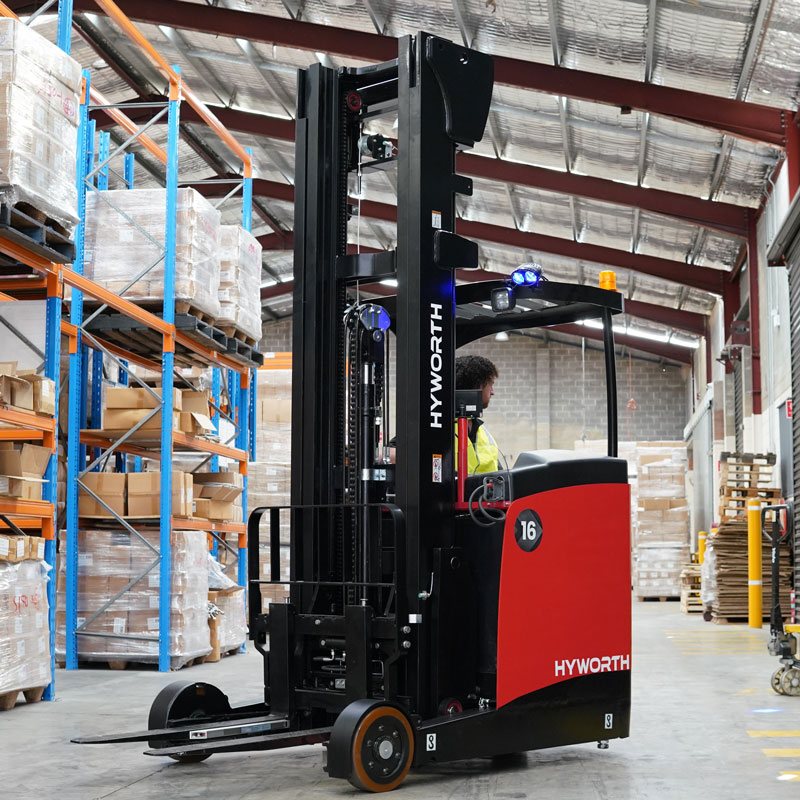
Power options and fuel types
Before buying a forklift, you’ll also need to decide on the power source that suits your operation best.
- Electric forklifts are quiet, clean, and ideal for indoor use. While they have higher upfront costs, they offer lower operating expenses and reduced maintenance. You’ll need to invest in battery charging stations and allocate time for recharging.
- LPG forklifts are flexible, offering consistent power throughout the day. Refuelling is quick, and they can be used in both indoor and outdoor environments with proper ventilation.
- Diesel forklifts, though less common indoors due to emissions, are the powerhouse of heavy-duty applications. They’re preferred on construction sites or bulk material handling operations.
The right choice depends on your facility layout, ventilation, budget, and sustainability goals.
Think beyond the forklift specs: Total cost of ownership
A common mistake businesses make before buying a forklift is focusing only on the initial purchase price. The reality is that the total cost of ownership includes a range of ongoing expenses:
- Regular maintenance and servicing
- Replacement parts and tyres
- Operator training and certification
- Downtime due to repairs or performance issues
- Energy or fuel consumption over time
A cheaper forklift may require more frequent maintenance or lack safety features that prevent accidents. Consider a model that balances affordability with durability, and always factor in how long you plan to use the forklift.
Should you buy, hire or lease your forklift?
At Hyworth Forklifts, we offer three flexible options because not every business is ready to commit to ownership from day one.
- Buying gives you full control over the equipment. It’s a smart long-term investment if you need daily use over several years. You’ll benefit from capital asset ownership and fewer restrictions on usage.
- Hiring is perfect for short-term jobs, seasonal demand, or project-based work. You avoid capital expenditure and maintenance headaches.
- Leasing is a good in-between option. It offers fixed monthly costs, newer equipment, and more financial flexibility.
Before buying a forklift, speak with a provider like Hyworth that understands your workload, growth goals, and budget, and can recommend the right path forward.
Test before you commit: Trial runs make a difference
Would you buy a car without test-driving it? The same logic applies to forklifts.
Trialling a forklift lets you check:
- Ease of operation and comfort for the driver
- Fit within your space (height, width, turning circle)
- Lift performance under load
- Noise levels and visibility
Hyworth Forklifts offers demo sessions and short-term hires, allowing you to evaluate a model in real-world conditions before making a long-term decision.
Choose a trusted forklift dealer for long-term support
The supplier you choose plays a crucial role in the long-term success of your forklift investment. A trusted dealer won’t just sell you a machine — they’ll support you throughout its lifespan.
Look for a supplier that offers:
- Transparent pricing and no hidden fees
- Preventative maintenance and servicing plans
- Fast access to spare parts
- On-site repairs and emergency support
- Advice tailored to your industry
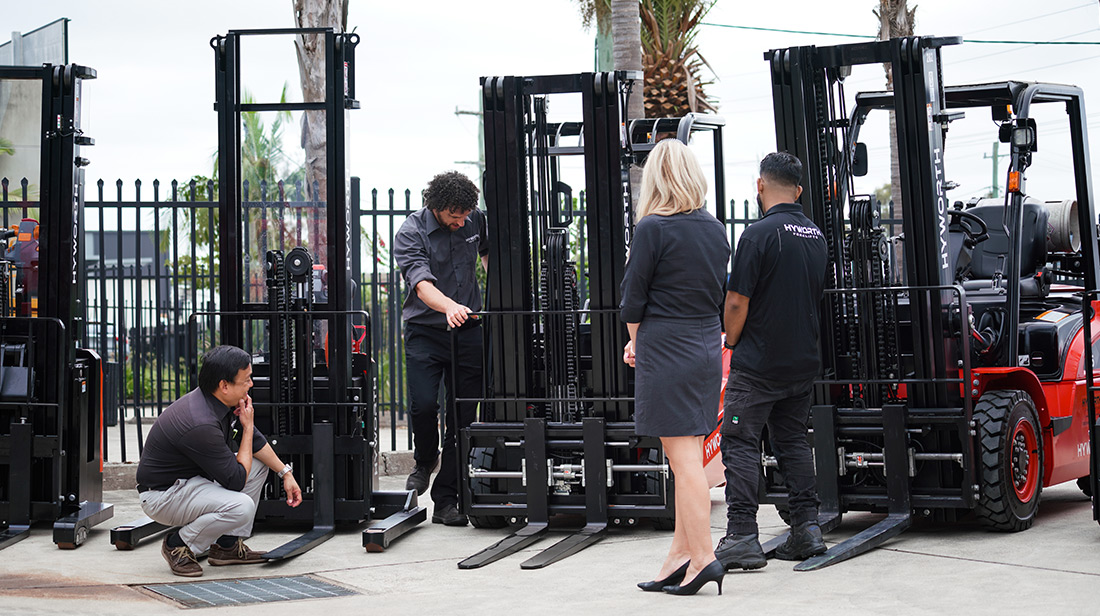
Hyworth is known across Sydney for its customer-first approach, offering dedicated account managers and personalised solutions. We don’t just drop off a forklift — we partner with you for the long run.
Avoid common mistakes before buying a forklift
Let’s go over some of the most frequent errors businesses make — and how to avoid them:
- Not measuring aisle widths – A forklift that doesn’t fit can cause accidents or be completely unusable.
- Choosing the wrong power source – Always match fuel type to your work environment.
- Focusing only on price – The cheapest option isn’t always the most cost-effective long term.
- Skipping a trial – Test runs help you identify deal-breakers before committing.
- Neglecting dealer reputation – Good support can save time and money in the long run.
Avoiding these mistakes helps ensure your forklift is a solution, not a setback.
Frequently asked questions about buying a forklift
What’s the average cost of a forklift in Australia?
New forklifts can range from $20,000 to over $60,000, depending on size, power type, and lift height.
Is it better to buy or hire a forklift?
Hiring offers flexibility and lower upfront costs. Buying is ideal for regular, long-term use. Hyworth offers both, depending on your needs.
How do I know what size forklift I need?
It depends on your heaviest load and highest lift point. We recommend speaking to a forklift specialist to match the specs of your tasks.
What’s the lifespan of a forklift?
With proper maintenance, a forklift can last 8–10 years or longer. Usage, environment, and model type all influence lifespan.
Conclusion
Choosing the right forklift takes more than browsing online or comparing price tags. That’s why it’s important to think about your worksite, your team, and your long-term needs before buying a forklift.
From choosing the right type to selecting the right supplier, every decision counts.
At Hyworth Forklifts, we’re here to help you navigate those decisions with honest advice, flexible options, and expert service. Whether you’re looking to hire, lease, or buy, get in touch with our team to explore the right solution for your business.